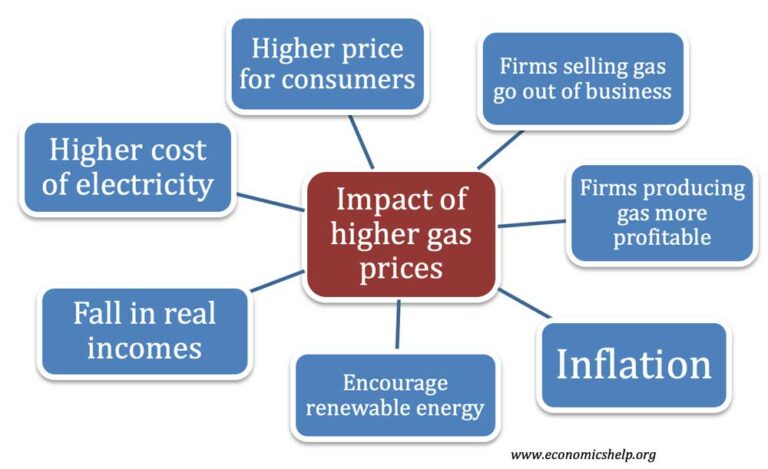The Impact Of A 20-Cent Rise In Average Gas Prices

Table of Contents
Impact on Household Budgets and Consumer Spending
A 20-cent increase in average gas prices might seem insignificant at first glance, but it quickly adds up. For someone commuting daily, this translates to a noticeable increase in monthly fuel costs. Consider a person who drives 50 miles a day, consuming approximately 2 gallons of gas at an average of $3.50 per gallon. A 20-cent increase means an extra $0.40 per day, amounting to roughly $12 extra per month—a significant sum that could impact their budget.
This increased transportation cost directly impacts discretionary spending. Families may find themselves cutting back on entertainment, dining out, and other non-essential expenses. The strain on household budgets becomes even more pronounced for lower-income families, potentially forcing difficult choices between necessities.
- Increased transportation costs: This is the most immediate and direct effect of a gas price increase.
- Reduced spending on entertainment and dining out: Extra money spent on gas means less available for leisure activities.
- Potential strain on household budgets: Families might need to adjust spending habits and prioritize essential expenses.
- Shift in consumer priorities towards cheaper alternatives: Consumers may seek out more affordable goods and services, impacting various industries.
Effects on Businesses and the Transportation Sector
The impact of a 20-cent rise in average gas prices isn't limited to individual consumers; businesses, particularly those reliant on transportation, feel the pinch as well. Logistics companies, delivery services, and trucking firms experience a direct increase in operational costs. This translates to higher freight costs, potentially leading to increased prices for consumer goods across the board.
The impact on businesses can lead to reduced profits, impacting hiring decisions and even potentially leading to job losses in sectors highly sensitive to fuel costs. Supply chains can also be negatively affected by increased transportation expenses, causing delays and shortages.
- Increased freight costs: This directly affects the price of goods, as businesses pass along increased fuel costs to consumers.
- Higher prices for consumer goods: Consumers see an increase in the cost of everyday items due to increased transportation expenses.
- Potential impact on supply chains: Delays and disruptions can arise from increased costs and logistical challenges.
- Reduced profitability for businesses: Businesses might see reduced profit margins and struggle to maintain operations.
Implications for Inflation and the Economy
Rising gas prices are a significant contributor to overall inflation. The increase in transportation costs ripples through the economy, affecting the prices of various goods and services. This upward pressure on prices directly impacts the Consumer Price Index (CPI), a key indicator of inflation. A sustained increase in gas prices can lead to an economic slowdown as consumer spending decreases and businesses face higher operational costs.
Governments often respond to rising gas prices with measures such as subsidies or tax relief to mitigate the impact on consumers and businesses. The effectiveness and long-term consequences of these interventions vary.
- Increased inflation rate: Rising gas prices contribute to a higher overall inflation rate, impacting the purchasing power of consumers.
- Impact on the Consumer Price Index (CPI): The CPI reflects the increase in gas prices, indicating a broader economic trend.
- Potential for economic slowdown: Reduced consumer spending and higher business costs can lead to slower economic growth.
- Government intervention strategies: Governments might implement subsidies, tax breaks, or other policies to address the economic fallout.
Alternative Transportation and Fuel Efficiency Solutions
The impact of rising gas prices is driving increased interest in fuel-efficient vehicles and alternative transportation solutions. The demand for hybrid and electric vehicles (EVs) is growing, spurred by higher fuel costs and environmental concerns. Public transportation is also gaining popularity as a more cost-effective alternative, particularly in urban areas.
Government policies play a crucial role in promoting sustainable transportation. Incentives like tax credits for fuel-efficient vehicles and investments in public transit infrastructure encourage the adoption of greener alternatives. The development of renewable energy sources also plays a critical role in reducing reliance on fossil fuels.
- Rise in demand for hybrid and electric cars: Consumers are increasingly seeking fuel-efficient options to reduce their fuel expenses.
- Increased use of public transportation: Public transit becomes a more attractive option when gas prices rise.
- Government incentives for fuel-efficient vehicles: Tax credits and subsidies encourage the purchase of greener vehicles.
- Investments in renewable energy sources: Developing renewable energy is crucial for long-term sustainability and reducing reliance on fossil fuels.
Conclusion: Navigating the Rising Costs of Fuel – Understanding the 20-Cent Impact
A 20-cent rise in average gas prices, while seemingly small, has far-reaching consequences for households, businesses, and the overall economy. Understanding the impact of this 20-cent gas price increase, and indeed, gas price fluctuations in general, is vital for making informed financial decisions. From adjusting household budgets to considering more fuel-efficient transportation options, proactive planning is essential. Research fuel-efficient vehicles, plan your commutes efficiently, and stay informed about gas price fluctuations and their broader implications to navigate these rising costs effectively. Understanding the impact of rising gas prices is crucial for both individual financial well-being and overall economic stability.

Featured Posts
-
 Politichni Naslidki Vidmovi Ukrayini Vid Nato Otsinka Yevrokomisara
May 22, 2025
Politichni Naslidki Vidmovi Ukrayini Vid Nato Otsinka Yevrokomisara
May 22, 2025 -
 New Record Man Achieves Fastest Ever Foot Crossing Of Australia
May 22, 2025
New Record Man Achieves Fastest Ever Foot Crossing Of Australia
May 22, 2025 -
 Beklenen Doenues Juergen Klopp Bir Dev Kuluebe Mi Geliyor
May 22, 2025
Beklenen Doenues Juergen Klopp Bir Dev Kuluebe Mi Geliyor
May 22, 2025 -
 Adios Enfermedades Cronicas El Poder Del Superalimento Para Un Envejecimiento Activo
May 22, 2025
Adios Enfermedades Cronicas El Poder Del Superalimento Para Un Envejecimiento Activo
May 22, 2025 -
 Cassis Blackcurrant A Comprehensive Guide To This Exquisite Berry
May 22, 2025
Cassis Blackcurrant A Comprehensive Guide To This Exquisite Berry
May 22, 2025
